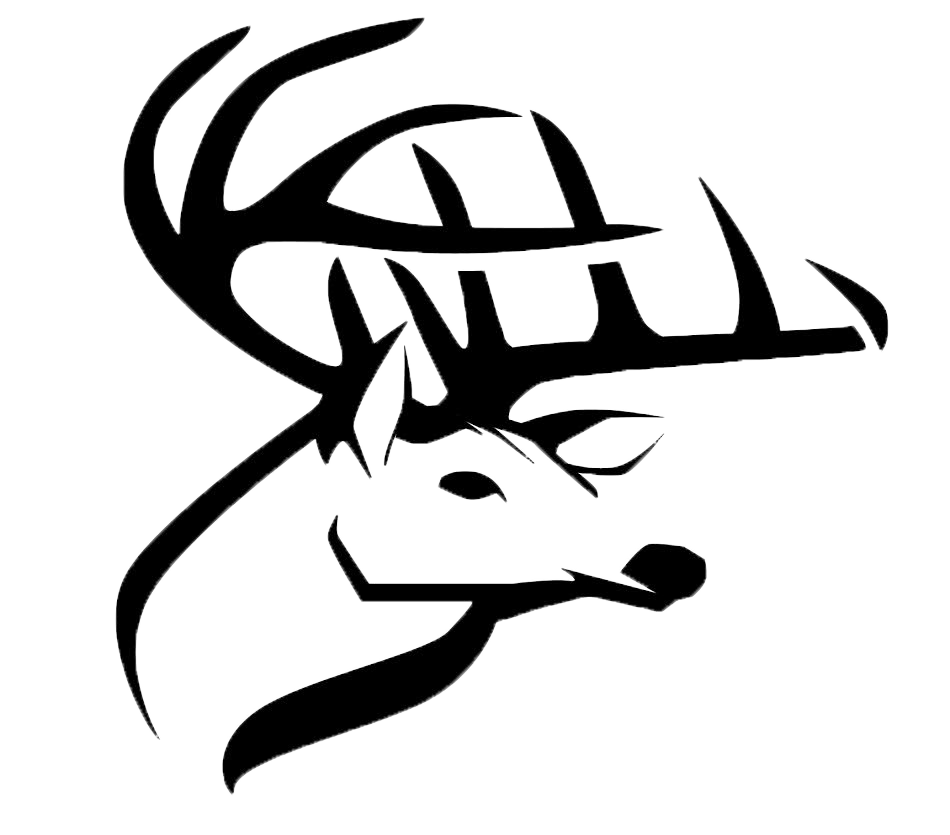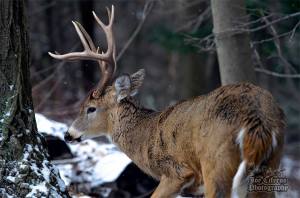Article contributed by Jim Newcomb
Taking big bucks on public land is tough – but it can be done if you pay attention to the basics. Let’s face it, not everyone’s pockets are deep enough to shell out the money necessary to go on an out-of-state guided hunt for big deer. However, big bucks can be taken from public lands. It just takes a little devoted work to do it.
It is very important to pinpoint the deer’s food sources. The deer will eat more than anything else while they are awake, thus you pinpoint that food source. This means you will locate their bedding areas and determine where they are moving to and from the food source.
A smart deer hunter keeps in mind how the food sources change during the progression of the season. Acorns will be easy to locate because of the signs left by deer and other wildlife.
When you find that potential food source, then you search for tracks, droppings and trails that show you signs of deer in the area. Wide trails should give you a good indicator of how the deer are entering and leaving a food source. Take some time out and scan the area for signs of other trails leading into the food source. Then find you a good spot for your ground blind or a good tree to hang your climbing stand on. Stay quiet and keep your eyes peeled on the area.
One of the biggest pressures you will face is other hunters. Remember this is public land, open to all legal hunters. A good hunter can figure out where the high human traffic is. Most hunters do not venture far from the road or do not get far off the forest walking trails.
Deer signs located near or around easy access areas will be heavily hunted. This is why I will hike one to three miles into the forest; to avoid other hunters and any chance of them ruining my hunt or having a hunting accident. If you are going to take the approach then you better be in shape to pack out your kill. I don’t know of anybody who has carried a whole deer out from this deep in the forest. Also if you are going to commit to deep woods hunting, you need to find a hunting partner to go with you.
When big bucks are pressured, they head for the cover in the deep woods. If you want one of these big boys you will have to follow them. Deer get relaxed and feel safe in areas that provide thick cover. I always look for the thickest cover around the food source I uncovered and then start looking for that thin trail leading in and out of that cover. I don’t know how many times I have seem monster bucks pop out of that thick cover.
Try to position your climbing stand right behind the food source and thickets or between them, just about fifteen yards to the side of the trail. Thickets create a sense of security for mature bucks, which will often leave their beds to forage on available acorn concentrations around the secluded shelter. When I hunt deep in the forest it is an all-day affair. It starts at about four in the morning and does not end until after dark.
My first true lesson in deer hunting came at the expense of a huge buck snorting as he trotted off safely out of range. As he popped out of the heavy brush I moved to get in a better position and that was enough to let him know I was there. He sounded off and let the whole forest know I was there.
The last thing a hunter wants to do is spook deer when approaching or leaving a deer stand. Sometimes the easiest and quickest route to your stand is also the avenue that cuts directly through areas that are high in deer activity. Trophy bucks on public land have accumulated a wealth of knowledge relating to patterning hunters and survival.
In the outdoors, luck is a ticket that will only take you so far and sometimes expires after one season. Luck definitely plays a role in any hunt, but woodsman ship, will keep you and your taxidermist smiling over the long haul.
I know this may sound like extreme hunting to some, but I learned from one of the best. I have seen the trophy bucks on his wall taken from public lands and it was easy to figure out he knew exactly how to hunt those public lands.
Jim “Duckie” Newcomb, president of ShellShocked Outdoors, http://www.shellshockedoutdoors.com, he is an outdoorsman with 45 years of personal experience in hunting, fishing and the great outdoors. He is an accomplished and respected waterfowl hunter along with guiding upland bird hunting adventures. He has trained thousands of gun dogs throughout his career. He is the host of an outdoor radio show and a respected outdoors writer and editor. His company does a lot of product testing for manufacturers of outdoor products.

